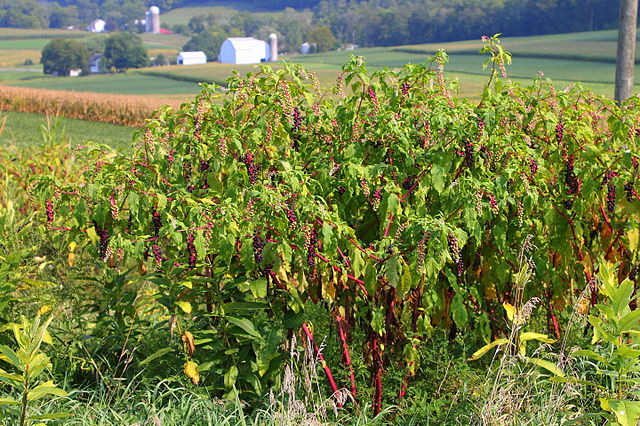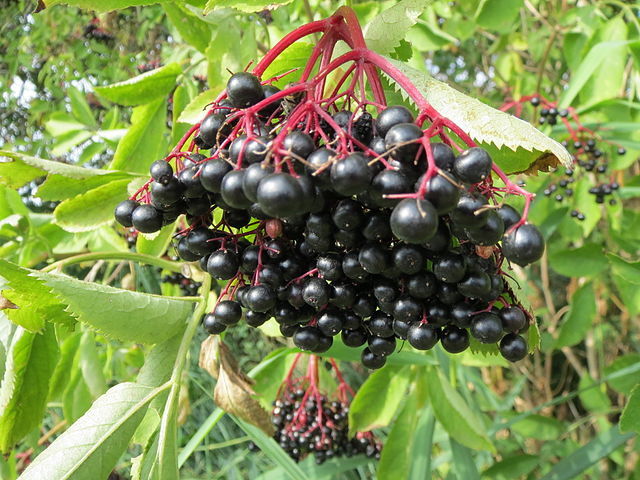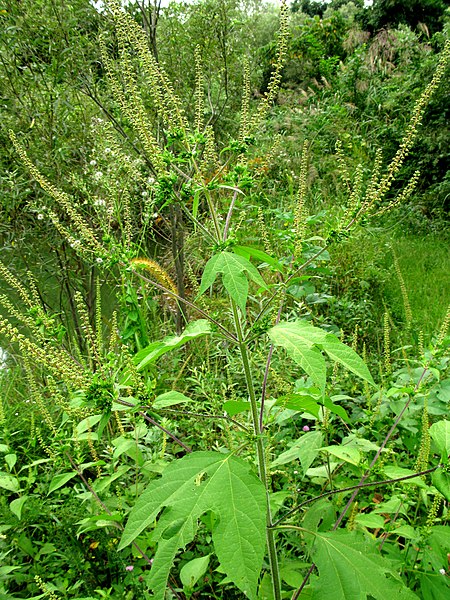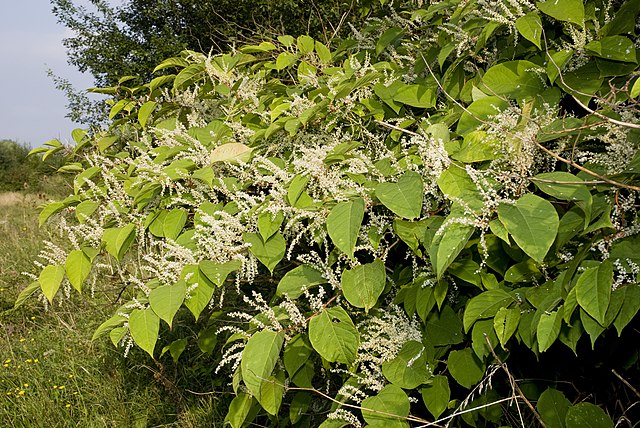3 Pokeweed Look-Alikes
Did you find a plant that looks like pokeweed and you want to ensure you identify it correctly? Here’s how to recognize pokeweed and several of its look-alikes.
Pokeweed (Phytolacca Americana) is a perennial plant in the family Phytolaccaceae (commonly known as the pokeweed family), genus Phytolacca. Other common names of this plant include American pokeweed, dragonberries, pokeberry, inkberry, poke root, pigeonberry, poke sallet, etc.
Phytolacca americana is native to several regions of North America and naturalized in parts of Europe and Asia. It is frequently found growing in fields and pastures, forest edges, roadsides, wastelands, forest openings, and disturbed soils.
Pokeweed is poisonous to humans and livestock. All plant parts, especially the roots, contain potent toxins that can be fatal if ingested in large amounts. The plant gets more poisonous when aging as the toxins concentration increase.
Although its fruits are poisonous as well, there are several species of wild birds that consume them. Birds also help with the dispersal of the seeds and propagation of this plant.
Many farmers regard pokeweed as a pest species due to its toxic nature and the threat this plant poses to livestock.
How To Identify Pokeweed
Pokeweed is not very hard to identify if you know the particularities of this plant and especially when the plant is mature and has fruits. However, there are several plant species that look similar to pokeweed and can easily be mistaken.
Phytolacca Americana is a large upright plant that grows 4 to 10 feet (1.2-3 m) and can either grow isolated or form bushes.
New plants typically emerge from mid-spring to early summer from the seeds. The leaves of the seedlings may have a reddish underside.

Pokeweed has a large white taproot and thick, smooth, reddish-purple branched stems.
Its leaves are simple, green, large, elliptical, connect to the stems via long petioles, are alternately arranged along the stem, and their size decreases toward the top of the plant.
The leaves also have a strong unpleasant odor when crushed. Yet, it would be best if you do not try doing this in your attempt to identify pokeweed as the leaves are also poisonous, and if the toxins reach your skin or eye it may cause serious problems.
Pokeweed produces clusters of tiny white, greenish, pinkish, or purplish flowers with five sepals each and no petals.
Its fruits are purple-black berries which grow in clusters and look similar to grapes. These are green before ripening and later get a blue-to-black or dark purple color.
The fruits are inedible and poisonous to humans and many species of animals.
Although pokeweed is pretty easy to identify, especially when the plant is mature and produces fruits, there are several other plants that look similar and which may be easily mistaken with it.
Here are several pokeweed look-alikes:
1. Elderberry (Sambucus Nigra)

Elderberry (Sambucus nigra), commonly known as elderberry, elder, black elder, European elderberry, and several other names, is a deciduous shrub in the family Adoxaceae, genus Sambucus. It is native to most parts of Europe, southwestern Asia, and northern Africa.
Sambucus nigra grows as a small tree. It doesn’t usually reach more than 20 ft (6m), but in rare cases, it can grow close to 33 ft (10m).
Elderberry grows best in sunny places and accepts a wide range of soils. It is frequently grown as an ornamental shrub but is also found growing on roadsides and woods.
The bark of elderberry is gray and deeply furrowed. The young stems are green and hollow.
The leaves are green, compound pinnate, with 5 to 9 leaflets, have serrated margins, and grow in opposite pairs. Similar to pokeweed, the leaves of elderberry have an unpleasant scent when crushed.
Elderberry produces clusters of tiny white flowers, which later produce the fruits.
The fruits are dark purple and grow in drooping clusters. These look somehow similar to the fruits produced by pokeweed.
Unripe berries, seeds, and all the green plant parts are poisonous to humans and animals. However, the fruits become edible after ripening and when cooked.
Elderberry may be mistaken with pokeweed when the plant is young or when bearing fruits.
2. Giant Ragweed (Ambrosia Trifida)

Giant ragweed (Ambrosia trifida) is an annual plant native to North America and introduced to Europe and Asia. Some of its other common names include great ragweed, tall ragweed, horseweed, Texan great ragweed, and buffaloweed.
Ambrosia trifida is generally considered an invasive species and a noxious weed. It is very adaptive to environmental conditions and can easily outcompete the native plants and field crops for light. Its pollen also triggers allergies to many people.
Giant ragweed frequently grows in disturbed soils, in cultivated fields, pastures, or on the roadsides. It is frequently found growing in groups, similar to pokeweed, and it is sometimes misidentified with it.
This plant doesn’t normally exceed 6.5 ft (2 m) in height, but in the proper soils, it can even reach 20 ft (6 m).
The stems of the plants are though, with woody bases and can be branched or unbranched.
The leaves of giant ragweed are large, rough in texture, green, with 3 to 5 lobes, and many times with toothed margins. They are oppositely arranged and connect to the stems via long petioles.
The giant ragweed produces spike-like clusters of small yellowish-green flowers at the tip of the central stem and branches.
3. Japanese Knotweed (Reynoutria Japonica)

Japanese knotweed (Reynoutria japonica) is a perennial plant in the family Polygonaceae, genus Reynoutria. It is native to Asia and introduced to many countries of the world. Two of the most common names for this plant include Japanese knotweed and Asian knotweed.
Japanese knotweed forms large clumps of plants and is regarded as an aggressive invasive species in multiple countries.
The plant has upright light green or reddish-brown hollow stems with numerous nodes, similar to bamboo.
The new leaves are dark red and become green with time. The older leaves are wide, largely oval with a sharp tip and a flat base. They grow alternately on the stem, in a zigzag pattern.
In late summer and early fall, reynoutria japonica produces small cream or white flowers in vertical clusters (racemes).
Japanese knotweed may be sometimes mistaken for pokeweed due to its similar way of growing in bushes and when in the blooming period.
Final Word
Pokeweed is a common weed found in numerous regions of the world. It is generally considered a problematic weed as it is toxic to humans and livestock and can contaminate agricultural produce.
Although it has some distinctive characteristics and is not a very challenging plant to identify in general, there are still other species of plants that resemble pokeweed in some of their growth stages and can be easily confused with it.
We have included in this article several plants that can be misidentified with pokeweed. The next time you stumble upon this plant or one of the look-alikes, you should be able to correctly and quickly identify it.

